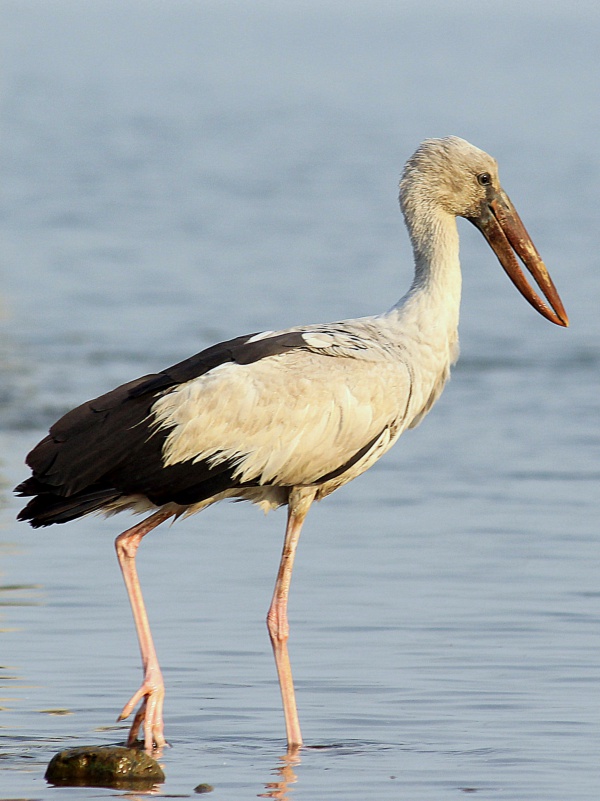Facts About Asian openbill
The Asian openbill, or Asian openbill stork, is a captivating large wading bird belonging to the stork family, Ciconiidae. Predominantly found across the Indian subcontinent and Southeast Asia, this bird is easily recognizable by its greyish or white plumage, glossy black wings and tail, and the distinctive gap between its upper and lower mandibles. This gap is not merely decorative; it is believed to assist the bird in handling snails, its preferred food. Although primarily resident within their range, these birds can migrate long distances in response to weather changes and food availability.
First described by Georges-Louis Leclerc in 1780, the Asian openbill is now classified under the genus Anastomus. The name "Anastomus" is derived from a Greek word meaning "to furnish with a mouth" while "oscitans" its specific epithet, is Latin for "yawning."
Upon spotting an Asian openbill, you'll likely be struck by its greyish or white feathers and its shiny black wings and tail. The most remarkable feature, however, is the gap in the bill of adult birds. Asian openbills favor foraging in inland wetlands, crop fields, and irrigation canals. Their diet mainly consists of large molluscs, particularly Pila species snails, which they expertly extract from their shells using their specialized bills. They also consume water snakes, frogs, and large insects.
The breeding season for these birds begins after the rainy season. They build nests in colonies on trees often partially submerged in water, laying two to four eggs. Both parents share the responsibility of incubating the eggs, which hatch in approximately 25 days. The chicks receive considerable care, often being shaded under the parents' wings. Although generally silent, these birds make clattering sounds during mating and emit low honking noises for communication.
Despite their resilience, Asian openbills face threats from predators such as eagles and parasitic worms. In colonial India, they were also hunted for their meat. Nevertheless, they play a crucial role in the ecosystem by preying on snails and other small aquatic creatures.

 Laos
Laos